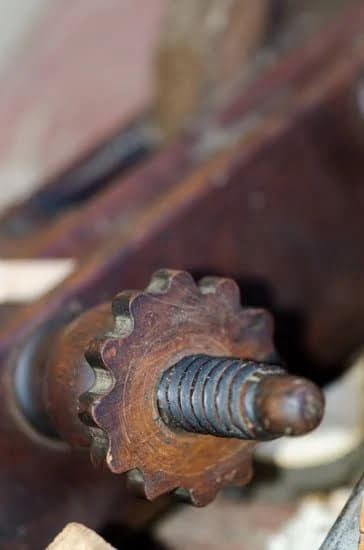What is the best glue for woodworking? Choosing the right glue is a critical decision for any woodworking project. The type of wood and the specific requirements of the project will determine which glue is best suited for the job. Understanding the importance of selecting the right woodworking glue is essential to ensuring a successful and durable outcome.
Woodworking glue plays a vital role in creating strong and long-lasting bonds between wood pieces. It not only holds the project together but also impacts its overall quality, durability, and aesthetic appeal. With a variety of wood glues available in the market, it can be challenging to determine which one is best for specific woodworking projects.
In this article, we will explore the different types of wood glues, factors to consider when choosing woodworking glue, top recommended wood glues by experts, application techniques, durability, strength, safety considerations, and environmental impact. By understanding these key aspects, you can make an informed decision about which woodworking glue is best suited for your projects.
Types of Wood Glues
Woodworking is a craft that requires precision and attention to detail, and one of the key elements in ensuring a successful woodworking project is choosing the right type of glue. There are various types of wood glues available in the market, each with its own unique properties and uses. Understanding the different types of wood glues can be instrumental in achieving strong and durable bonds in woodworking projects.
One of the most common types of wood glue is PVA (polyvinyl acetate) glue, which is known for its versatility and ease of use. It is suitable for a wide range of woodworking applications and dries clear, making it ideal for projects where aesthetics are important. Another popular type is polyurethane glue, which is prized for its water resistance and ability to bond well with different types of wood.
When considering what is the best glue for woodworking, it’s important to take into account factors such as open time (the amount of time before the glue starts to set), working temperature, and clamping pressure required. Additionally, understanding the specific requirements of your woodworking project will also influence your choice of wood glue.
In addition to PVA and polyurethane glues, other types of wood glues include hide glue, epoxy resin, cyanoacrylate (super glue), and specialty woodworking adhesives. Each type has its own strengths and weaknesses, so it’s essential to carefully consider which one would be most suitable for your particular woodworking project.
| Type | Properties |
|---|---|
| PVA Glue | Versatile, ease of use, dries clear |
| Polyurethane Glue | Water resistance, bonds well with different woods |
| Hide Glue | Traditional choice, reversible bond with heat or moisture |
| Epoxy Resin | High strength bond, gap-filling properties |
Factors to Consider When Choosing Woodworking Glue
When it comes to woodworking projects, choosing the right glue is crucial for ensuring the success and quality of your creations. With a wide range of wood glues available in the market, it’s important to consider several factors before making your selection. Here are some key factors to keep in mind when choosing the best glue for your woodworking projects:
1. Type of Wood: Different types of wood require different types of glue. For example, porous woods like oak or pine may benefit from using a glue with longer open time, while dense woods like maple or cherry may require a quick-setting adhesive. Consider the type of wood you will be working with and choose a glue that is suitable for its specific characteristics.
2. Project Requirements: The nature of your woodworking project will also influence the type of glue you should use. If you are working on outdoor furniture or structures, you’ll need a waterproof glue to withstand the elements. For indoor furniture and decorative items, a standard wood glue may suffice.
3. Application Method: Consider how you plan to apply the glue to your woodworking pieces. Some glues are better suited for use with a brush or roller, while others come in convenient squeeze bottles or applicators for precise application in tight spaces.
By carefully considering these factors, you can make an informed decision on which woodworking glue will best suit your specific project needs. Taking into account the type of wood, project requirements, and application method will ensure that you choose the best glue for achieving strong and long-lasting bonds in your woodworking endeavors.
Top Recommended Wood Glues
Woodworking experts and enthusiasts understand the crucial role that the right glue plays in ensuring the success and longevity of woodworking projects. With a plethora of options available, it can be challenging to determine which wood glue is the best for a particular project. In this section, we will highlight some of the top-rated and most trusted wood glues that come highly recommended by woodworking experts.
One of the most highly regarded types of wood glue is polyvinyl acetate (PVA) glue, commonly known as yellow glue. This type of glue is versatile and suitable for a wide range of woodworking applications. It has a fast setting time and creates a strong bond, making it ideal for joinery and general woodworking projects.
Another popular option is polyurethane glue, which is prized for its exceptional strength and waterproof properties. This makes it an excellent choice for outdoor furniture and other projects that require resistance to moisture and humidity. Polyurethane glue also expands as it cures, filling any gaps or imperfections in the joint for added durability.
Epoxy resin adhesives are also highly recommended for woodworking due to their incredible strength and long-lasting bond. Epoxy glues are especially well-suited for bonding dissimilar materials or surfaces, making them an indispensable tool in a woodworker’s arsenal.
Woodworking experts often emphasize the importance of choosing a wood glue that suits the specific requirements of each project. Factors such as open time, cure time, ease of application, and overall bond strength should all be taken into consideration when selecting the best glue for woodworking projects.
| Wood Glue Type | Key Features |
|---|---|
| Polyvinyl Acetate (PVA) Glue | Versatile, fast setting time, strong bond |
| Polyurethane Glue | Exceptional strength, waterproof, gap-filling properties |
| Epoxy Resin Adhesives | Incredible strength, long-lasting bond, suitability for dissimilar materials |
Application and Techniques
Woodworking glue is a crucial component in any woodworking project, as it is responsible for holding the pieces of wood together and ensuring the overall structural integrity of the finished product. There are various techniques and methods for applying woodworking glue, depending on the specific project at hand. Here are some important tips and guidelines for properly applying and using woodworking glue for different projects:
Surface Preparation
Before applying any woodworking glue, it is essential to ensure that the surfaces to be glued together are clean, smooth, and free from any dust, debris, or previous adhesive residue. This can be achieved by sanding the wood surfaces and wiping them down with a clean cloth to remove any particles.
Proper Glue Application
When applying the woodworking glue, it is important to use an appropriate amount to achieve a strong bond without excessive squeeze-out or wastage. This typically involves spreading a thin, even layer of glue on one surface using a brush or roller, then joining the pieces together immediately while applying pressure.
Clamping and Drying
After applying the woodworking glue and joining the pieces together, it is crucial to secure them in place with clamps to ensure that they bond properly. The recommended clamping time and drying time can vary depending on the type of woodworking glue being used, so it is important to refer to the manufacturer’s instructions for specific recommendations.
By following these application and techniques guidelines when working with woodworking glue, craftsmen can ensure strong and reliable bonds between wooden pieces in their projects. It is also important to consider factors such as open time (the amount of time before the glue starts setting), assembly time (when parts need to be brought together), as well as drying time when choosing which type of wood glue will best suit your specific needs.
Durability and Strength
When it comes to woodworking, the durability and strength of the glue are crucial factors to consider. Whether you are crafting furniture, constructing cabinets, or working on intricate wood joinery, using the right glue can make a significant difference in the longevity and performance of your woodworking projects.
Importance of Durability and Strength
The durability and strength of woodworking glues directly impact the overall quality and resilience of the finished product. A strong and durable bond ensures that the wood pieces stay firmly attached over time, even when exposed to various environmental conditions such as humidity, temperature changes, and heavy usage.
Woodworking Glues Known for Exceptional Performance
There are several wood glues known for their exceptional durability and strength in woodworking projects. For example, polyurethane glue is highly regarded for its ability to create a strong bond that can withstand heavy loads and resist water. Additionally, epoxy resin-based glues offer exceptional strength and are particularly well-suited for bonding different types of wood.
Considerations for Choosing Durable and Strong Woodworking Glue
When selecting a woodworking glue based on durability and strength, it is important to consider the specific requirements of your project. Factors such as open time (the time available to adjust the glued surfaces), cure time, curing conditions (temperature and humidity), and compatibility with different wood species should all be taken into account. Additionally, considering the flexibility of the cured glue joint can also be important in certain applications.
Understanding these considerations will help you select a woodworking glue that provides superior durability and strength for your specific woodworking needs.
Safety and Environmental Impact
When considering the best glue for woodworking, it is essential to take into account not only its performance but also its safety and environmental impact. Many wood glues contain chemicals that can be harmful if inhaled or come into contact with the skin. It is crucial to prioritize safety when selecting a glue for woodworking projects, especially if you are working in an enclosed space or with children or pets around.
In addition to safety considerations, the environmental impact of wood glues cannot be overlooked. Some adhesives may contain volatile organic compounds (VOCs) that can contribute to indoor air pollution and have adverse effects on human health and the environment. As such, choosing a wood glue that is low in VOCs or environmentally friendly can help minimize these negative effects and create a healthier workspace.
To address these concerns, many manufacturers now offer wood glues that are specifically formulated to be low in VOCs and non-toxic. These environmentally friendly options provide a safer alternative for woodworking projects while still delivering strong and durable adhesion. Additionally, some wood glues are water-based, further reducing their environmental impact compared to solvent-based counterparts.
Ultimately, considering safety and environmental impact when choosing the best glue for woodworking not only protects your health and the environment but also contributes to creating a sustainable and responsible approach to woodworking. By prioritizing these factors alongside performance and strength, you can ensure that your woodworking projects are not only well-crafted but also mindful of safety and sustainability.
Conclusion
In conclusion, choosing the best glue for woodworking projects is a crucial decision that can significantly impact the quality and longevity of your creations. With an array of options available in the market, it’s important to consider key factors such as the type of wood being used, the intended application, and the level of strength and durability required. By understanding these considerations, woodworkers can make informed decisions when selecting the most suitable glue for their specific projects.
When exploring the various types of wood glues, it becomes evident that each has its own set of advantages and limitations. Whether it’s traditional PVA glues, polyurethane adhesives, or epoxy resins, each type offers unique properties that cater to different woodworking needs. It ultimately comes down to assessing the specific requirements of a project and choosing a glue that best aligns with those needs.
In light of safety and environmental concerns, it’s also essential to prioritize products that are non-toxic and have minimal environmental impact. Furthermore, following proper application techniques and understanding how certain glues perform in terms of durability are essential for achieving long-lasting results.
In essence, the best glue for woodworking is one that meets all these criteria – offering strong adhesion, easy application, and reliable performance while being mindful of safety and environmental impact. By considering these factors holistically, woodworkers can confidently select the most suitable glue for their woodworking endeavors.
Frequently Asked Questions
What Is the Strongest Glue for Wood to Wood?
The strongest glue for wood to wood bonding is typically considered to be polyurethane glue. This type of glue creates a strong and durable bond, making it suitable for heavy-duty woodworking projects.
What Kind of Glue to Use for Woodworking?
When it comes to woodworking, the type of glue to use depends on the specific application. For general woodworking projects, many woodworkers prefer using yellow woodworking glue (also known as carpenter’s glue) due to its strong and reliable bond that is also easy to clean up.
What Is the Best Glue for Material to Wood?
The best glue for bonding material to wood will largely depend on the materials being used. For fabric or leather to wood, contact cement is commonly used due to its strong and flexible bond. For other materials like plastic or metal, epoxy or construction adhesive may be more suitable for a secure bond to wood surfaces.

Hi everyone! I’m a woodworker and blogger, and this is my woodworking blog. In my blog, I share tips and tricks for woodworkers of all skill levels, as well as project ideas that you can try yourself.





